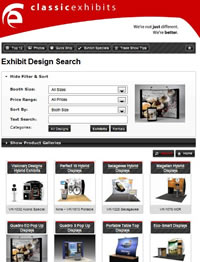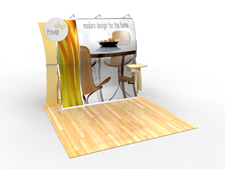Pintos, Gremlins, and Vegas
I can already hear the chuckles and see the smirks. Anyone who knows me, knows it would be a stretch for me to be chosen as a forward or center on any basketball team. I barely qualify as a guard on most middle school teams. But this is not about my height. It was inspired by an article in The New York Times about the unloved small car trio of the Pinto, Vega, and Gremlin (Import Fighters? No, Just Punchlines).
While many of my friends owned Pintos and Gremlins, I owned a 1975 white notch-back Vega. I loved that car. By 1975, GM had fixed the most glaring problems with the Vega, including seal leaks and a tendency to rust whenever dark clouds appeared. I bought the car used (less than 12,000 miles) from a father who worried the car would die somewhere between WV and FL where his daughter was attending college. 130,000 miles later, the car finally left me stranded on the side of the road outside of Versailles, KY.
With one or two exceptions, small cars in the 70’s and 80’s, whether domestic or foreign, were designed for the frugal, the poor, or the seriously brain addled. Or in my case, all three. You prayed they would last 75,000 miles. You accepted the fact that no one would ever give you a thumbs up at a stop light, and you set your sights on a girlfriend or boyfriend who respected “value” and “inner beauty.” Small cars were unloved, and the manufacturers did very little to make them loveable.
The history of portable trade show displays is not much different. Through much of the 80’s and 90’s, they were functional rather than beautiful. Pop ups were lightweight and convenient, and if you could afford mural graphics, often attractive (if at times fragile). Folding panel systems were more durable, but regardless of how many detachable graphics, lightboxes, shelves, or backlit headers were added, they were folding walls with carpet. And they were heavy. Laminate modular systems upped the ante a bit since they mimicked many custom features. These were an improvement, but the prices were no longer portable.
Times Have Changed
Over the past 7-8 years, trade show display manufacturers have evolved, much like the auto industry. Smaller products come in far more designs, in a wide range of price points, and can be basic or upscale. No display category speaks to that more than “hybrids.” Hybrid displays are much sexy than pop ups or panel systems, without necessarily sacrificing the benefits of portability or modularity. Hybrids combine engineered aluminum extrusion and large format tension fabric graphics with just about anything else that makes sense. And because metal can be bent, hybrids move beyond squares, rectangles, and 90 degree corners. Curves elevate simple designs into alluring, attractive, and lightweight displays.
Does that mean hybrids are custom displays? Not necessarily yes, but not necessarily no. The very nature of a hybrid display makes it somewhat of a chameleon. For example, they can be simple 10 ft. kits between $4k to $8k, or ground-up island designs between $60k to $160k. It’s their upscale look and adaptability that make them popular choices. Hybrids can pack in portable roto-molded cases or ship in custom crates, all depending on the complexity, scale, and features of the exhibit.
What Makes Them Different?
So what makes similar hybrids different from manufacturer to manufacturer? Design for one. In that respect, it’s very similar to buying a car. There are certain looks that appeal to us, and others that don’t. Features are another. For example, you may need locking storage, a large monitor option, or an iPad solution. Not all manufacturers or designs will address those requirements. Finally, there’s assembly, packaging, and quality. Except for design, this is where you’ll find the biggest difference between hybrid manufacturers.
- Assembly: You have a choice. There’s the ‘bag of bolts” approach, where assembling a hybrid requires multiple tools, loose parts, and generic instructions. Unfortunately, there’s no rule of thumb since price doesn’t dictate ease of assembly. It depends on whether the manufacturer values easy assembly and custom instructions. Manufacturers who value easy assembly design their systems with attached knobs and connectors. This approach limits the number of loose parts, and all components are numbered (and referenced in the instructions). There’s a night and day difference between a “bag of bolts” vs. “knob and attached connectors.”
- Packaging: Few exhibitors think about packaging when purchasing an exhibit, but they should. Quality manufacturers sweat the details. They make sure that packing is just as easy as unpacking. They remove the guesswork. They don’t rely on bubble wrap and lightweight disposable foam, but die-cut foam packaging, fabric lined crates, and permanent jigging.
- Quality: You know it when you see it. It reveals itself in hundreds of tiny, seemingly insignificant ways. Is everything labeled? Has the exhibit arrived clean? Is the case protected? Are the instructions specific to your display? Does the exhibit look remarkable after 10, 15, 20 shows? When shopping for a new display, ask your exhibit consultant to compare the quality of one system to another. There’s a reason why one costs $4k but another one $7k?
 If you are shopping for a new display, we invite you to browse through Exhibit Design Search, the world’s largest database of exhibit designs. In addition to pop ups, banner stands, table tops, and hanging signs, you’ll find over 500 portable, modular, and custom hybrid displays. Each one can be customized to your unique trade show marketing goals.
If you are shopping for a new display, we invite you to browse through Exhibit Design Search, the world’s largest database of exhibit designs. In addition to pop ups, banner stands, table tops, and hanging signs, you’ll find over 500 portable, modular, and custom hybrid displays. Each one can be customized to your unique trade show marketing goals.
And if you’re still exhibiting with the trade show equivalent of a Pinto, Gremlin, or Vega . . . it’s time to get a new ride. Times have changed and Small is Now Beautiful.
–Mel White
http://www.linkedin.com/in/melmwhite
mel@classicexhibits.com
*********************************
Based in Portland, Oregon, Classic Exhibits Inc. designs and manufacturers portable, modular, and custom-hybrid exhibit solutions. Classic Exhibits products are represented by an extensive distributor network in North America and in select International markets. For more information, contact us at 866-652-2100 or www.classicexhibits.com.
Tags: Classic Exhibits, gremlin, Hybrid Displays, pinto, portable displays, Trade Shows, vega






I had a friend in high school who threw a 351 Cleveland in a Pinto.
You could pull it up to a hill with a steep incline and spin the tires while the car rolled backward.
It never exploded.
Love the blog – normally would associate Vegas and Small… Believe spell check caused a typo in the title.